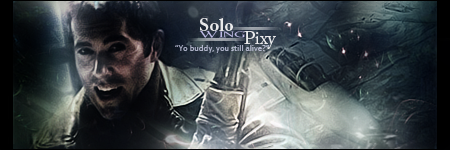
Like in Ace Combat 5, the player is the flight lead and can give orders to their wingman with the arrow buttons. Last but not least, Cipher's battle record determines the in-game dialogue between allies and enemies, making Cipher either feared (Soldier), revered (Knight), or viewed with disdain (Mercenary). As a result, it also affects which planes are unlocked upon completing each mission (see Aircraft) and which characters Brett Thompson interviews in the framing story, creating a degree of non-linearity in the game. The ace style mainly determines which enemy ace squadrons (see Characters) the player faces in the next level. While the Knight Aces receive the least credits, they also face the least aggressive enemies.

This style emphasizes minimizing collateral damage (even from high-spread bombs). This style strikes balance between indiscriminate destruction and avoiding unnecessary damage, earning less credits but facing easier enemies. This style emphasizes destroying as many hostile and neutral targets as possible, which brings most credits but results in encounters with the toughest enemy aces. The effect is cumulative but neutral yellow targets only appear up until mission 14, after which only the rare yellow aircraft can be used to slightly alter the Ace Style gauge. Whether the player kills or spares the yellow targets determines their Ace Style, represented by a gauge in their mission debriefing screen. However, since destroying yellow targets brings additional credits, the player is given the option to shoot them at their discretion. Yellow targets are harmless and are not required to destroy in order to complete the mission, so neither the wingman, nor allied planes will target them. These targets are either civilian ground facilities or previously hostile planes that took critical damage and attempt to escape the battle airspace. Unlike the previous games in the series, Zero features non-hostile destructible "yellow targets" (called so because they are highlighted yellow on the radar). The central feature of the game is a dualistic moral alignment system based on the player's treatment of neutral targets. from earlier games) before starting the game. Unlike Ace Combat 04 and 5, Zero does not feature a gameplay tutorial explaining the flying basics, so the player has to be already familiar with the controls (e.g. The new Boresight System allows the player to select their lock-on targets manually with a thumbstick instead of cycling through bogeys and ground targets. The player can choose between three different control schemes: either Zero-specific, or based off Ace Combat 5 ("ACE5 A" and "ACE5 B").
#Solo wing pixy ps2#
With the default controls, players steer their plane with the PS2 controller's left analog stick and aim the camera with the right analog stick, with the arrow buttons used for interaction with the wingman. Typical of the Ace Combat series, most of the game takes place in the air, seen from the cockpit of Cipher's plane. It is also the only installment to feature the Ace Style system, which determines the course of the story according to the player's conduct on the battlefield. The Belkan War features more named enemy units (most of them members of the legendary Belkan Air Force) than all prior Ace Combat games to date combined consequently, dogfights against small squadrons of highly skilled AI pilots play a much larger role in this game than in others.
#Solo wing pixy series#
The story is narrated in retrospect by Osean journalist Brett Thompson and a series of his interviews with Belkan War veterans, in particular with Cipher's former wingman Larry "Pixy" Foulke. The single-player campaign follows the story of a legendary mercenary ace, " Cipher", and his impact on both the outcome of the Belkan War and the lives of the enemy aces he defeated in combat. It was the first Ace Combat game to be released under the newly-merged Namco Bandai.

The game was developed alongside Ace Combat 6: Fires of Liberation and released in 2006. He was a true ace." ― Larry Foulke Īce Combat Zero: The Belkan War, published in Europe as Ace Combat: The Belkan War, is the eighth installment in the Ace Combat franchise and a prequel to Ace Combat 5: The Unsung War. And those who can read the tide of battle. there are three kinds of aces? Those who seek strength. They teach this very early in introductory level economics courses - when you use 20 logs to make 10 chairs, you don’t count the 20 logs as part of your GDP."Did you know. I mean, Paradox had GDP calculating incorrectly until like 1.2 because they were double counting input resources. People just assume it’s a deep, complex economic simulation because they’re not familiar with basic economics. They plotted out demand curves for consumer goods and wrote out some production functions for buildings and called it a day.

They didn’t even put a ton of work into the economy simulation.


 0 kommentar(er)
0 kommentar(er)
